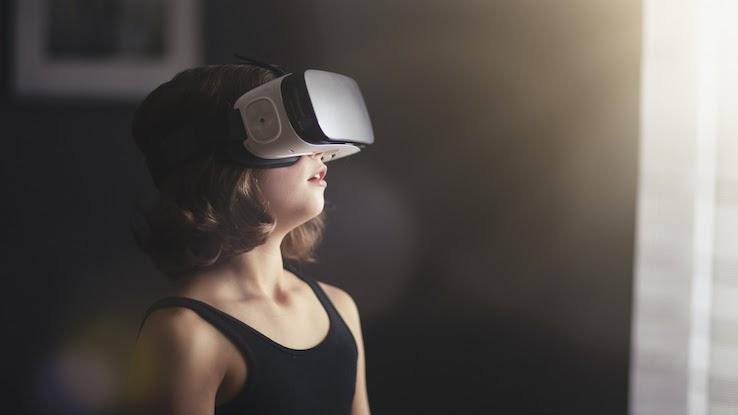
When you think about technology like virtual reality (VR) and augmented reality (AR), the first things that probably come to your mind are entertainment and video games — in particular, games and entertainment that simulate the real world (or an imagined one) in a highly realistic way. And while VR and AR are certainly transforming the entertainment industry, these technologies also have valuable uses in a wide variety of different (and potentially surprising) fields, including healthcare.
Many companies are starting to use both VR and AR in ways that are redefining what’s possible when it comes to medical care, available treatments and patient education. Techniques and equipment that might have seemed like the stuff of science fiction novels just a few decades ago are now the future of healthcare. And they have the potential to change not only the ways we receive care but also how we think about our health.
What Is Augmented Reality Technology?

AR technology combines the environment of the real world with virtual or computer-generated 3D graphics and other interactive experiences related to our senses. The generated graphics can supplement visual, auditory, olfactory and other sensations in the real world to create a more engaging experience. In other words, computer-generated images, videos and information are presented in 3D graphics — and they’re overlaid over the real world. AR systems incorporate three primary features that can exist in AR programs by themselves or together.
The first is blending the real world with the virtual world. For example, some furniture stores are using AR so customers can see what the pieces of furniture look like in their actual homes virtually and check dimensions before deciding to buy. The second is real-time interaction. Some museums are now using this technology to allow visitors to virtually interact with things like dinosaurs on electronic devices while they’re in the museums. The last element is the very precise 3D alignment of computer-generated and real objects. This means the graphics are presented in a way that they look like they integrate seamlessly into the view of the real world that’s appearing along with the graphics.
The virtual AR information that’s overlaid on the real-world view of an AR system can work in different ways. It can be constructive, which means it adds to what’s already in the actual space. It can also be destructive, which means it hides what’s in the actual space by masking certain objects. Regardless of how the AR computer program alters a space with its overlaid graphics, good AR seamlessly blends the virtual world with the real world. We perceive the virtual elements as part of our natural environment, and it’s an immersive experience.
AR typically works through digital devices such as smartphones, tablets and computers. These devices contain the software, digital projectors and sensors that trigger the virtual display to appear over the physical world in front of us. We can then see the combined digital and real world elements on the devices’ screens.
How Is AR Different From Virtual Reality?

VR is similar to AR, but they’re different forms of technology. While AR provides a partially immersive experience because it combines virtual elements and the real world, the goal of VR is to provide a 100%-digital immersive experience. This requires a special headset. Once you put it on, the fully immersive experience begins. The only experience that a person wearing a VR headset should have is the one happening inside the headset.
VR is commonly used in video gaming. Gamers put on a headset, and, using devices like hand controllers and sensor-equipped gloves, engage in a first-person experience within a game. However, VR has plenty of other applications, too. For example, in healthcare, the company FundamentalVR offers VR training for surgeons. Using this form of VR, they can practice surgeries and different techniques without having to operate on real people. The VR experience of this includes both tactile and haptic feedback. This means the practicing surgeons not only get audio and visual experiences from VR, but that VR systems also create the sensation of touch. This provides a much more realistic experience.
With our current state of technology, AR has more applications across industries than VR. It’s more practical in a wider variety of environments — and in the healthcare sphere in particular.
What Are Some Uses of Augmented Reality in Healthcare?

The use of AR in healthcare has an exciting array of possibilities that companies are already starting to explore. And, the technology is expected to grow immensely in the coming years.
One of the most valuable ways medical professionals are starting to use AR in healthcare is for surgical planning. While it’s long been possible for surgeons to perform successful surgeries, having even more assurance that a surgery will go well is ideal. AR for surgical planning could help to prevent surprises surgeons sometimes face during operations, such as by providing clearer imaging of a patient’s internal organs during a procedure. Additionally, AR visuals can educate patients before they go into surgery so they gain a better understanding of what’s happening during their operation. As a result, they may feel more comfortable with the procedure and experience less anxiety.
AR can also simulate certain health conditions. This can improve patient treatments and boost patient health after they’ve received those treatments. For example, AR can provide a map of a patient’s body so nurses can more accurately locate veins when they need to take blood or insert an IV. This technology can also recreate tumors in 3D so surgeons don’t need to expose patients to extra radiation while viewing X-rays in real-time.
AR’s usefulness in medical training has monumental potential, too. Using AR in place of anatomy apps can allow medical students to become better prepared before they officially begin working in healthcare. AR medical school tools might include internal anatomical views of the body and the ability to interact with those views in a way that’s much more beneficial than reading diagrams in a textbook. This potential for hands-on practice can reinforce learning because it’s much more engaging.
These are just a few examples of the many possibilities for AR’s potential role in healthcare. AR could have the potential to completely transform healthcare to make the experience safer and more comfortable for patients and providers alike.
AR Companies Have Exciting Visions for Healthcare

As AR shows a world of promise in the field of medicine, many companies have already begun to provide the transformative ideas and programs necessary to take healthcare to the next level. Taking a look at a few of them demonstrates just how beneficial this technology can be.
Augmedics, a company based in Chicago, got clearance from the U.S. government for its headset that provides a realistic surgery guidance system. Called xvision, this tool creates a 3D representation of a patient’s anatomy. These visuals appear as if the doctor can see through the patient’s skin. When surgeons tested it, the technology provided a 98.9% accuracy rate.
Based in St. Louis, SentiAR’s AR addition to the healthcare industry is a holographic visualization of a patient’s anatomy. This appears as though a clear view of their anatomy is floating directly over the patient during different procedures. Using SentiAR, doctors can see a 360-degree, real-time, interactive view of what they’re doing as they’re doing it. This allows for less invasive surgery and can result in better patient outcomes and quicker recovery times.
With these technologies, and others that are still in development, AR stands to revolutionize surgical procedures, improve healthcare providers’ ability to treat patients and potentially transform healthcare as a whole. The future’s definitely looking bright — and virtual.
Resource Links:
“IKEA’s Revamped AR App Lets You Design Entire Rooms,” WIRED
“Johns Hopkins Performs Its First Augmented Reality Surgeries in Patients,” Johns Hopkins Medicine
“How Museums Are Using Augmented Reality,” Museum Next





